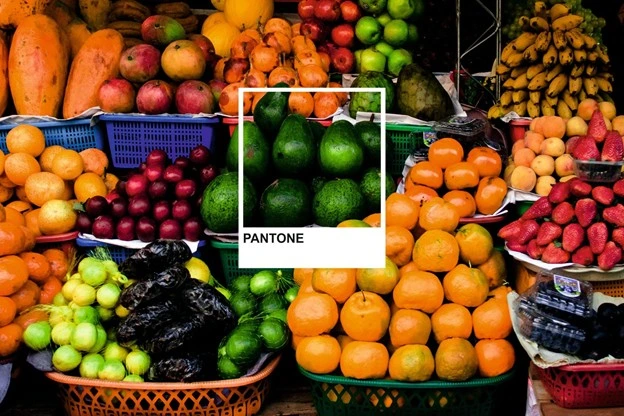It’s a fantastic journey our everyday items make from their creation to store shelves and finally at our homes. The path of a snack or household item is remarkable, and this journey is a cornerstone of the Fast-Moving Consumer Goods (FMCG) industry. It is a complex journey, yet the essential part of it is the “last mile.” It is the final step from the distribution center to your shopping cart, and this might be the most complicated one.
For a long time, companies have used barcodes to identify products. However, today, the supply chain has evolved, and consumers expect — and even demand — more. Companies are seeking solutions that not only read static data but can also see the product itself. It is where FMCG image recognition might be the key. This innovative technology can change the way we trace and authenticate products. This will lead to a significant improvement, helping brands protect product integrity and build customer trust.
Seeing the Supply Chain Differently
The industry of consumer goods evolves quickly. The once-simple path from production to retail has evolved into a multifaceted international supply chain. Now, shoppers are not only purchasing items; they are also engaging with brands and striving to understand where their products come from as well as how the brands source them and their impact on nature. This ever-increasing trend of wanting more information creates immense stress on conventional systems of tracking and tracing.
Barcodes, while essential, don’t offer the deep insights or real-time visual verification needed in this new landscape. They tell you what an item is, but rarely where it came from, who handled it, or if it’s truly genuine at every stage. This lack of visibility creates weak points – for product diversions, quality issues, and, most critically, the entry of fake goods. Image recognition in FMCG, however, goes beyond these limits. This enables systems to see, track, and confirm the identity of products alongside their packaging.
Beyond Barcodes: The Power of Visual Data

To appreciate image recognition in FMCG systems, we must first know the shortcomings of their previous forms. This is not about eliminating barcodes but rather empowering them with a visual dimension like never before.
Why Barcodes Aren’t Enough
Although effective for primary identification, barcodes are myopic. They are comparable to a name tag that fails to tell you anything more than what’s on it. As an identifier, a barcode is very easy to copy, fake, or reuse which makes it a poor safeguard against determined counterfeiters. Visually confirming the condition (damaged box, broken seal, or faded label) does not tell the barcode reader anything so it will treat all these as equals and thus damaged goods go unacknowledged. Infringed items also get passed quietly without any notice being taken of them too just because they do not bear any narcotic seals. Cumulatively needing to scan each item slows things down in some situations especially when a lot happening at once. You cannot look at a pallet of goods and form ideas about its contents during stock-checking situations; every item has to be scanned which not only provides exact information but also creates bottlenecks and vulnerabilities leading to brand reputation loss.
While barcodes have served as a simple identifier, they fail to offer the in-depth visual verification that image recognition in FMCG now provides, ensuring authenticity and quality at every stage of the supply chain.
The Promise of “Seeing” Products
Now, imagine a system that doesn’t just read a code but sees the product. This is the profound promise of visual data driven by advanced algorithms. Image recognition in FMCG solutions utilize cameras and artificial intelligence to analyze not only static information but also the dynamic visual characteristics of an item.
Imagine an AI image recognition FMCG system that can spot the precise color of a logo, capturing minute blemishes on a bottle and the exact positioning of a tamper-evident seal. It differentiates between authentic items and well-crafted fakes, including those sharing identical barcodes. This goes far beyond auxiliary identification; it enables real-time visual monitoring and automated quality control for check systems marking an incredible enhancement in detailed scrutiny throughout the entire supply chain always accompanied with verifiable context.
Image Recognition in Action: Across the FMCG Supply Chain
This is where image recognition in FMCG truly makes a difference, leading to tangible improvements at every stage of the FMCG supply chain.
From Factory to Warehouse: Keeping an Eye on Products
From the very beginning of a product’s life, IR FMCG can start its vigilant journey. On fast-moving production lines, cameras with image recognition can automatically identify, count, and verify each item as it’s made and packaged. This ensures accurate inventory from the start, flagging any issues instantly. As products move into warehouses, image recognition systems can automate receiving processes by quickly confirming incoming shipments against manifests through visual identification of items and their quantities. The technology helps to reduce manual errors and speed up operations. Additionally, you will receive more precise details about the inventory within your logistics network. And will be able to ensure smooth and accurate transportation of goods.
Fighting Fakes: Verifying What’s Real
The global problem of counterfeiting costs the FMCG industry billions each year and erodes consumer trust. Here, image recognition for FMCG acts as a powerful deterrent. An IR system compares any dubious item with genuine marked images custom-tailored through vast databases of real product pictures. It goes beyond scanning a barcode while examining the whole item, comprising its package design, logo, and font accuracy, as well as special security features.
Ensuring Top Quality and Following the Rules
Apart from tracking and identifying image recognition allows for effective monitoring of abiding by quality standards and compliance requirements. Consider the magnitudes of products in motion within an average FMCG enterprise; manual checking for faults is often sluggish, unreliable, and inconsistent due to human fatigue. An IR solution for FMCG provides automated, high-speed visual inspection capabilities, detecting even the most subtle issues with remarkable precision. It helps brands to deliver only the highest-quality products to the market, as well as to protect reputation and promote customer safety.
AI image recognition can detect the following issues with the product:
- Packaging integrity: Identifying any tears, dents, punctures, or improper seals.
- Labeling errors: Validation of incorrect product labels. Verification of nutritional information and expiration dates.
- Fill levels: Verifying the specified volume of product in bottles, cans, or pouches is contained within.
- Product appearance anomalies: Discoloration, foreign objects, misshapen items, or other visual defects are identified.
- Assembly verification: All components that make up a multi-part product are put together as designed.

More Than Logistics: Building Consumer Trust
The impact of image recognition goes beyond operational efficiency and extends to your brand’s relationship with the customers. Carefully tracking each step of a product’s journey enables you to manage trust throughout the supply chain, not just inventory.
In today’s world, consumers desire assurance about a product’s origin which includes food sourcing and manufacturing. With its unparalleled ability to enhance transparency, image recognition for the FMCG system empowers brands to tell customers everything, turning mystery into an open book. The capability transforms bearing moral responsibilities to boasting ethical practices alongside ensuring product safety while sustainably sourcing raw materials adds immense value. With unyielding skepticism prevalent these days, forging customer trust proves priceless.
The Path Forward
Contemplating the role of image recognition technology in the FMCG supply chain reveals one striking conclusion: this is not simply business as usual. This is an entirely new way of managing and safeguarding business assets, including products and profits, along with promises made to customers. We have witnessed how it solves the persistent problems associated with the “last mile” delivery; it goes way past barcoding to provide unparalleled control and visibility. Image recognition automation is transforming every aspect of a product’s movement, from real-time inventory monitoring and automating intricate quality assurance tasks to offering robust protection against counterfeiting. All of these improvements lead to lower costs, increased business efficiency, and most importantly, an added trust from consumers.
- 5 Best Mobile App Builders in 2025 - September 18, 2025
- Sitemap NoIndex SEO Tools vs Shopify Sitemap Apps - August 7, 2025
- Booking Plugin vs Contact Form for Appointments: Which Is Better? - August 1, 2025


